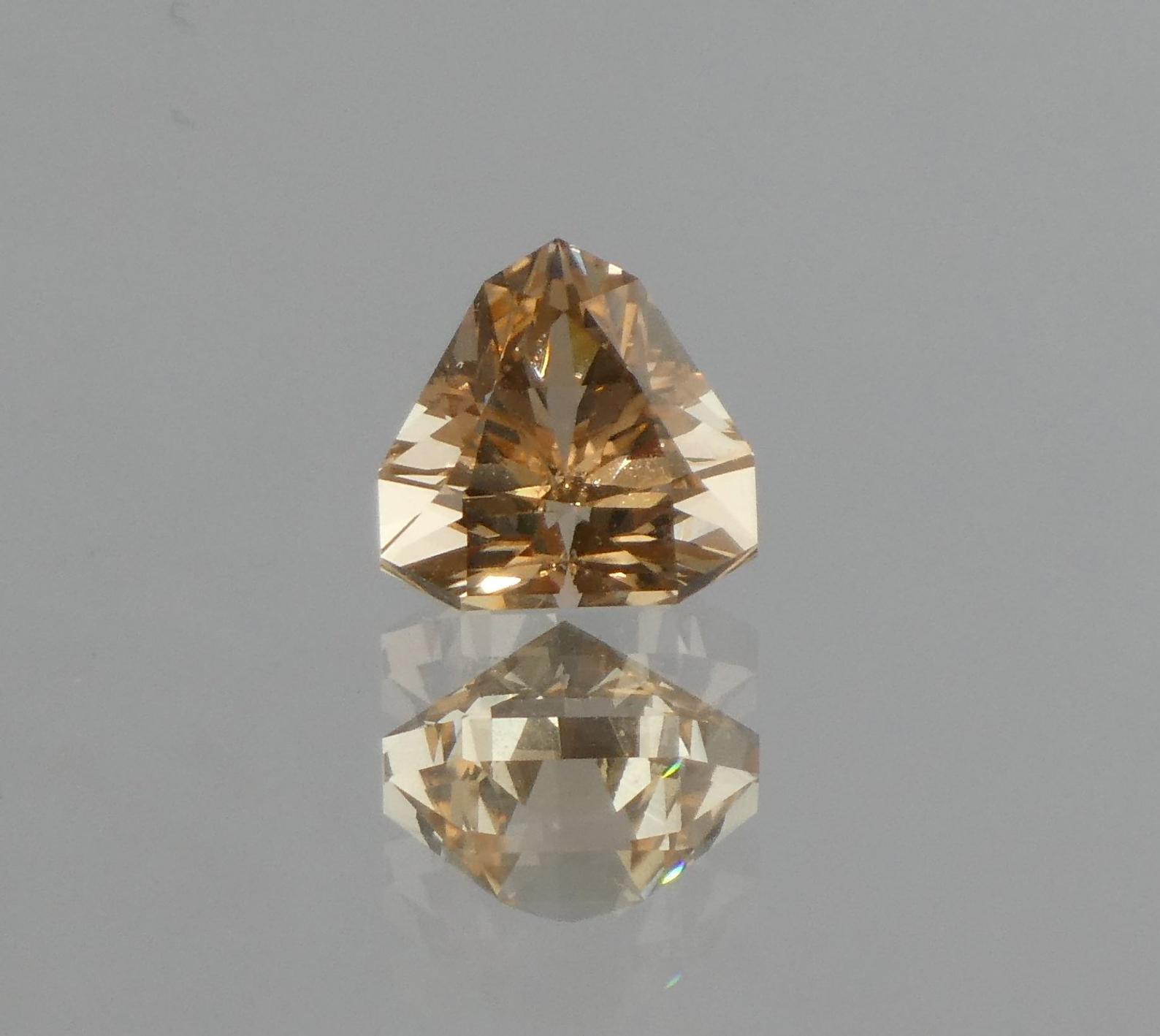Heliodor Value, Price, and Jewelry Information
Heliodor is a member of the beryl family. This stone is known for its range of yellow colors — from pale yellow, greenish yellow, orange-yellow, to a deep golden orange. Heliodor can be faceted for jewelry use.
2 Minute Read
Heliodor is a member of the beryl family. This stone is known for its range of yellow colors — from pale yellow, greenish yellow, orange-yellow, to a deep golden orange. Heliodor can be faceted for jewelry use.
Start an IGS Membership today
for full access to our price guide (updated monthly).Heliodor Value
As with other beryls, top values for heliodor go to gems with high clarity first and good color a close second. Heliodors are available in large sizes, too, so there’s no increase in price per carat until 10+ carats.
What is Heliodor?
Heliodor is the beryl variety that receives its yellow color from Fe3+ ions. Per Mindat, the name "heliodor" originated as a trade name for golden beryl from Rössing, Namibia but now encompasses any gem-quality, golden-yellow beryl.
Is There a Difference Between Heliodor and Golden Beryl?
Heliodor is also known as golden beryl. However, some gemological references distinguish between the terms heliodor and golden beryl, using "heliodor" strictly for beryls with a greenish yellow color and "golden beryl" for beryls with pure yellow to gold color. Other references, notably Walter Schumann, reject heliodor as a distinct variety of beryl altogether and consider heliodors as simply "weak-colored" golden beryls.
Does Heliodor Make a Good Jewelry Stone?
Heliodors make durable jewelry stones, whether faceted or cabbed.
These stones also occur in sizes large enough for carving.
Identifying Characteristics
Green beryls are sometimes misidentified as heliodors.
Prismatic heliodor crystals may have naturally etched faces. This results from changes in the chemical composition of the crystal's growth medium due to overpressure during its formation.
Some cabbed heliodors may show chatoyancy (a "cat's eye" effect).
Are There Synthetic Heliodors?
Manufacturers can synthesize beryls, including heliodors, via flux and hydrothermal methods. You might find these lab-created stones in jewelry.
Can Heliodors Receive Gem Treatments?
Treatments applied to heliodors include heating, impregnation, and dyeing.
Greenish yellow heliodors may be heated and turned into aquamarines. This is known to have happened with Ukrainian material. Better known by consumers, faceted aquamarines will generally sell for more than heliodors. However, aquamarines may also be irradiated and turned into heliodors. Reportedly, pale aquamarines from Vietnam may receive radiation treatments in Laos, only to be returned to Vietnam and sold as natural heliodors.
Some controversy surrounds so-called heliodors from Zelatoya Vada, Tajikistan. According to Dmitriy Belakovskiy, the curator of the Fersman Museum in Moscow, these heliodors, aside from their color, look like Pakistani aquamarines and Chinese beryls. Furthermore, he was unable to locate the purported source of these stones in the field. (See his chapter in Beryl and Its Color Varieties (2005) for more information). These heliodors may simply be treated aquamarines and/or colorless beryls (goshenite).
Where are Heliodors Found?
Significant sources of gem-quality heliodors include the following:
- Brazil: greenish yellow to fine, deep-orange colored material, much of it gemmy.
- Madagascar: gemmy crystals.
- Namibia: in pegmatites.
- Russia: gemmy crystals.
- Ukraine: gemmy crystals.
In the United States, Connecticut produces small but fine colored crystals, some gemmy.
Maine and New Hampshire also produce some crystals.
Other sources:
- Afghanistan; Cambodia; China; Finland; India; Kenya; Malawi; Mozambique; Myanmar; Nigeria; South Africa; Sri Lanka; Tanzania; Zambia; Zimbabwe.
Stone Sizes
Ukraine has produced rough that has yielded faceted heliodors up to 2,500 cts in weight.
Notable, sizable heliodors in museum collections include the following:
- British Museum (Natural History) (London England): 82.25 (yellow).
- Royal Ontario Museum (Toronto, Ontario, Canada): 77.8 (yellow, step cut, Brazil).
- Smithsonian Institution (Washington, DC): 2,054 (greenish yellow, rectangular step cut, Brazil); 133.5 (yellow, Madagascar); 43.5 (golden cat's eye, Madagascar); 17.5 (yellow, Russia).
How to Care for Your Heliodor Gemstones
Heliodors free of inclusions can be cleaned using mechanical systems. Have a gemologist examine your gems first to identify any potential weaknesses. Of course, a soft brush, mild detergent, and warm water will always work safely.
Consult our gemstone jewelry care guide for more recommendations.
Joel E. Arem, Ph.D., FGA
Dr. Joel E. Arem has more than 60 years of experience in the world of gems and minerals. After obtaining his Ph.D. in Mineralogy from Harvard University, he has published numerous books that are still among the most widely used references and guidebooks on crystals, gems and minerals in the world.
Co-founder and President of numerous organizations, Dr. Arem has enjoyed a lifelong career in mineralogy and gemology. He has been a Smithsonian scientist and Curator, a consultant to many well-known companies and institutions, and a prolific author and speaker. Although his main activities have been as a gem cutter and dealer, his focus has always been education. joelarem.com
International Gem Society
Related Articles
Is Golden Beryl a Good Gem Choice for Jewelry?
Black Diamond Value, Price, and Jewelry Information
Chameleon Diamond Value, Price, and Jewelry Information
Gray Diamond Value, Price, and Jewelry Information
Latest Articles
Amethyst Sources Around the World: The Geological Story Behind These Purple Gemstones
Brazilianite Value, Price, and Jewelry Information
Ruby-Glass Composites vs Leaded Glass Clarity Enhancements
Morganite Buying Guide
Never Stop Learning
When you join the IGS community, you get trusted diamond & gemstone information when you need it.
Get Gemology Insights
Get started with the International Gem Society’s free guide to gemstone identification. Join our weekly newsletter & get a free copy of the Gem ID Checklist!
